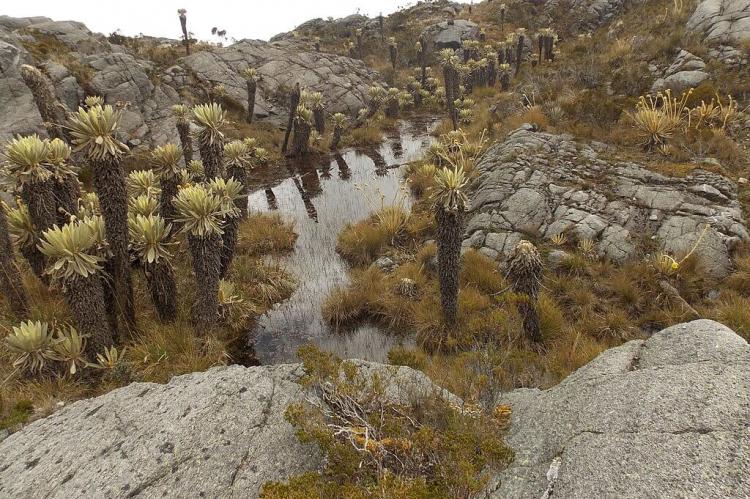The Páramo - Andean Moorland: A Unique High-Mountain Ecosystem
The Páramo, or Andean Moorland, is a distinctive high-mountain biome in the upper Andes of Colombia, Ecuador, Peru, and Venezuela. This grassland ecosystem, situated above the timberline but below the permanent snowline, is renowned for its unique flora and fauna.
The Páramo - Andean Moorland: A Unique High-Mountain Ecosystem
The Páramo, or Andean Moorland, is a distinctive high-mountain biome in the Neotropical region, specifically in the upper Andes of Colombia, Ecuador, Peru, and Venezuela. This grassland ecosystem, situated above the timberline but below the permanent snowline, is renowned for its unique flora and fauna, making it an essential component of the region's biodiversity.
Geographic Distribution
Stretching between latitudes 11°N and 8°S, the Páramo is discontinuously distributed throughout the Neotropics. Its primary concentration is in the northwest corner of South America, with notable occurrences in the Colombian Andes. The Sumapaz Páramo, situated in the Eastern Ranges of the Colombian Andes, is the largest Páramo ecosystem on Earth.
Landform Characteristics
The Páramo landscape is characterized by its irregular and uneven terrain, shaped by the historical influence of glaciation. Small glacial lakes and tributaries dot the landscape, creating a picturesque yet challenging environment. Notably, the biome is the source of numerous significant rivers in northern South America, including the Magdalena, Cauca, Napo, Coca, and Orinoco rivers.
Terrestrial Ecoregions
The Northern Andean Moorland global ecoregion encompasses several terrestrial ecoregions, each contributing to the overall richness of the Páramo biome. Notable ecoregions include the Cordillera Central páramo in Ecuador and Peru, the Santa Marta páramo in Colombia, the Cordillera de Merida páramo in Venezuela, and the Northern Andean páramo in Colombia and Ecuador.
Biodiversity of the Andean Moorland
The Páramo ecosystem boasts the title of hosting the richest high-mountain flora globally, marked by high levels of endemism. Its grasslands are home to numerous rare and endangered species, some restricted to specific mountains or valleys. Among the remarkable fauna inhabiting the biome are the endangered spectacled bear and the Andean mountain tapir. Other mammals include the Andean fox, mountain coati, long-tailed weasel, guinea pig, tapir, woodland Oldfield mouse, Apolinar's wren, the black-breasted puffleg, and the Bogotá rail.
In addition to mammals, the Páramo provides shelter and habitat for a diverse range of reptiles and amphibians. Notable species include the Colombian lightbulb lizard, poison dart frogs, rocket frogs, and the black water frog.
Conservation Importance
Due to its high biodiversity and ecological significance, the Páramo ecosystem requires careful conservation efforts. Human activities such as agriculture and climate change threaten this delicate environment. Sustainable conservation strategies must be implemented to protect the unique flora and fauna of the ecosystem, ensuring the continued health of this remarkable high-mountain biome.
Conclusion
The Páramo, or Andean Moorland, stands as a testament to the natural wonders of the Neotropical region. Its diverse and unique ecosystem, with a rich tapestry of flora and fauna, highlights the importance of conservation efforts to safeguard this critical component of South America's biodiversity. Education and awareness are crucial in fostering a deep understanding of the Páramo's ecological significance, encouraging responsible environmental practices to benefit current and future generations.





